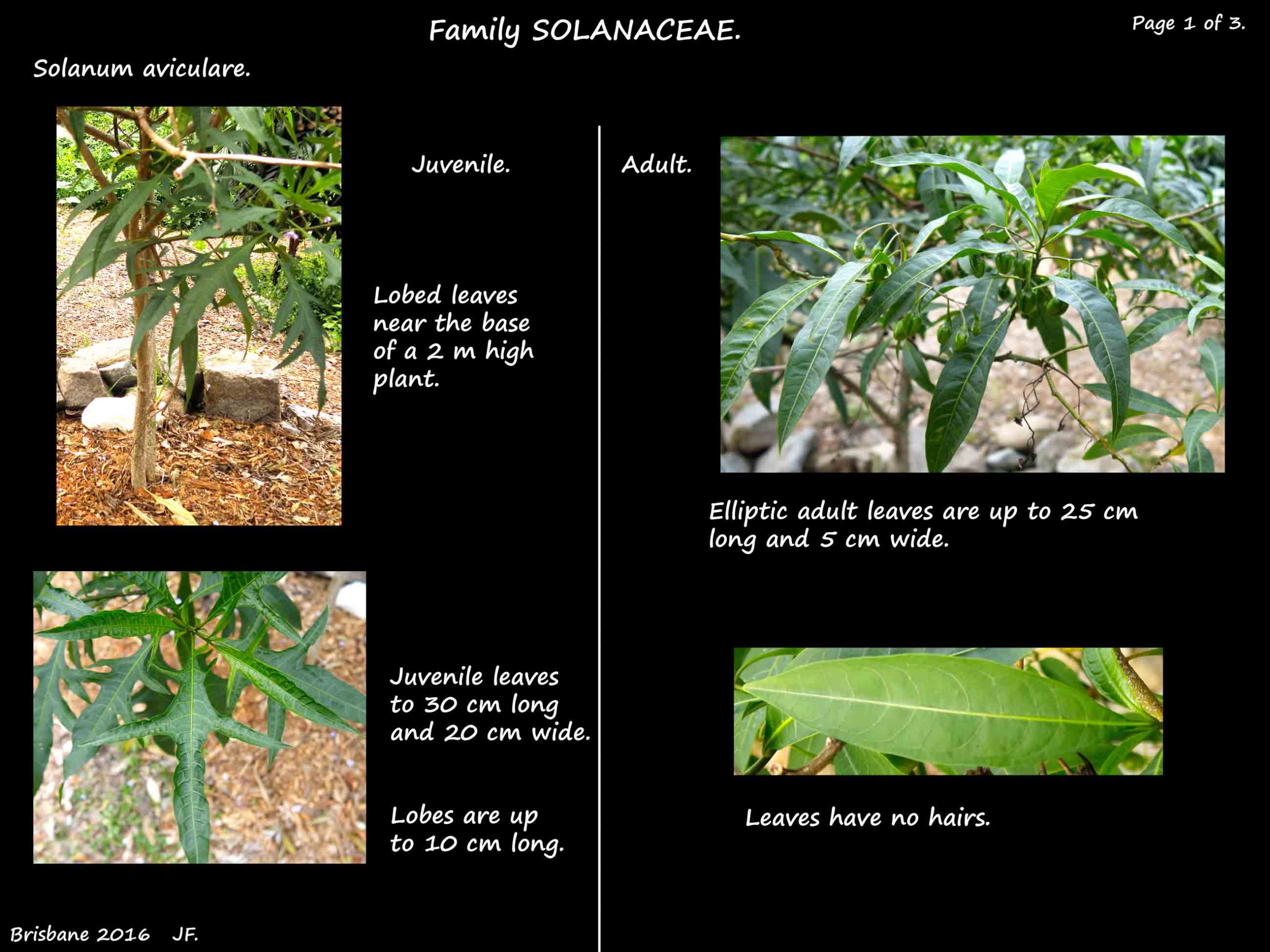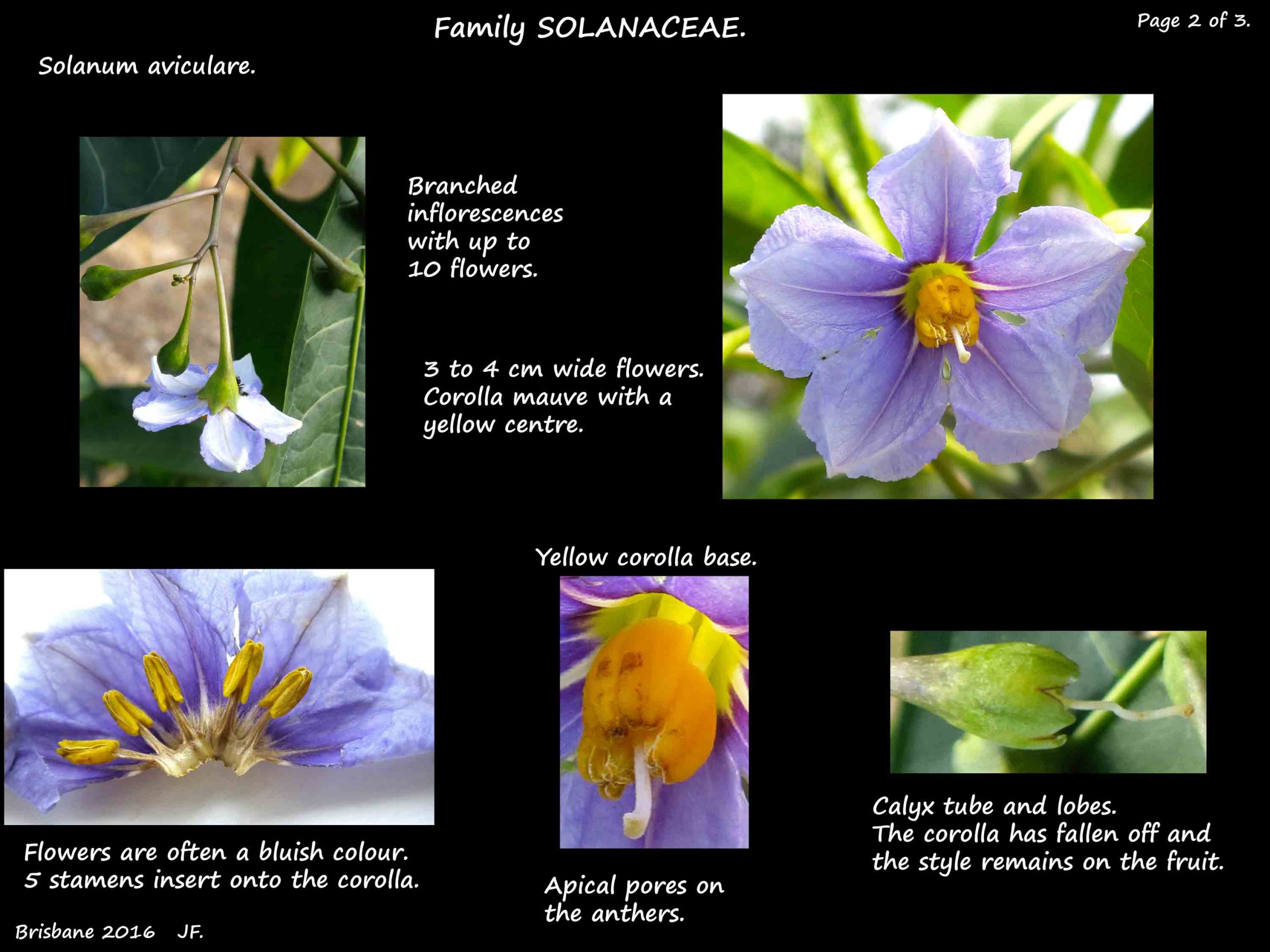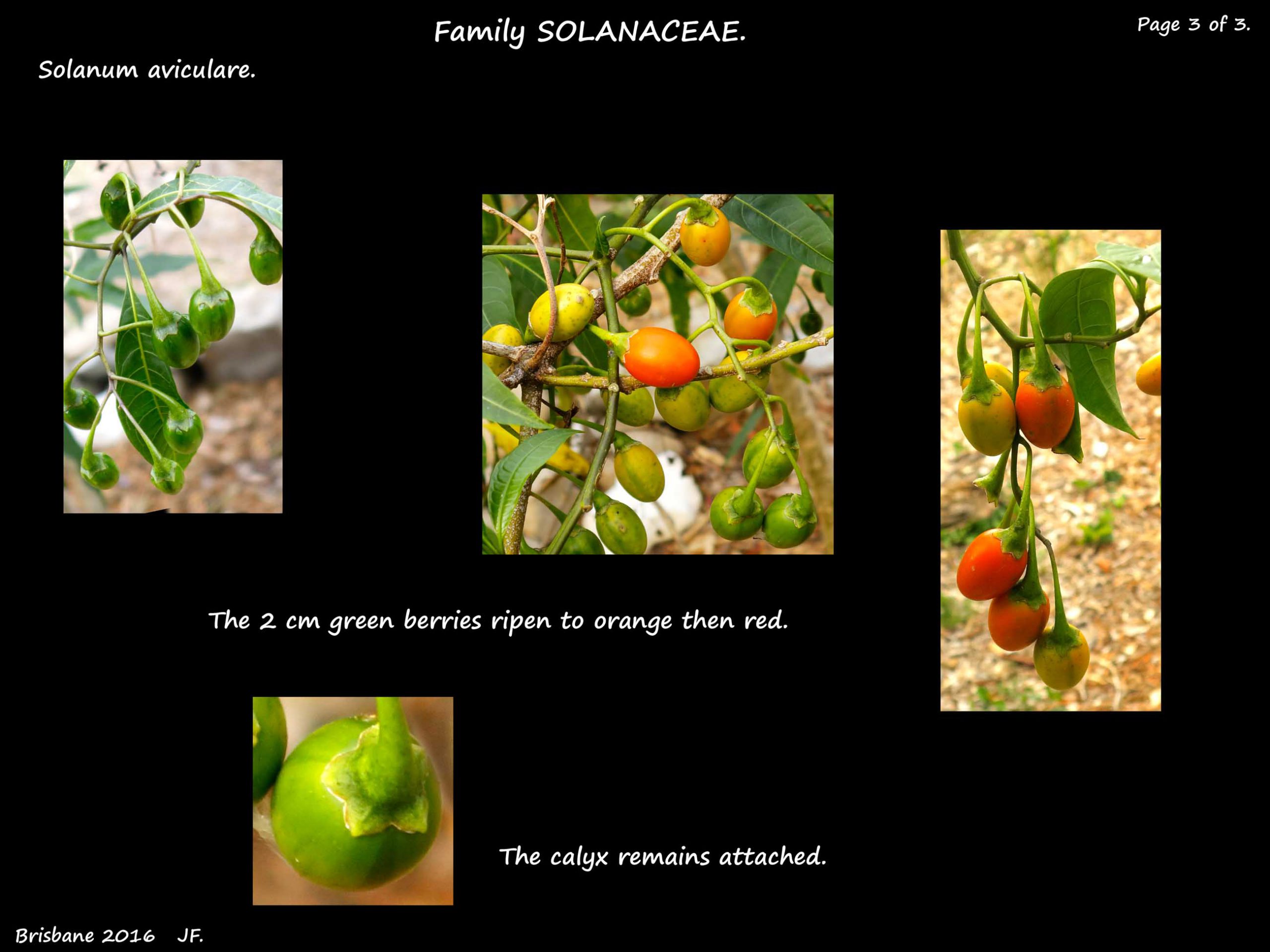Solanum aviculare.
Family Solanaceae.
The Kangaroo apple is native to eastern Australia and other nearby areas.
It occurs widely in eastern Queensland.
They are shrubs up to 4 m high that live for 5 to 6 years.
The stems have no hairs or prickles.
The alternate leaves are of 2 types – lobed juvenile ones and simple adult ones.
The lobed juvenile leaves, on petioles up to 4 cm long, are up to 30 cm long and around 20 cm wide.
Each narrow lobe can be up to 10 cm long and no more than 2 cm wide.
The simple, lanceolate to elliptic adult leaves are on shorter petioles.
They are up to 25 cm long but only 4 to 5 cm wide.
The branched inflorescences have up to 10 flowers on a 3.5 cm long stalk or peduncle.
The bisexual flowers, 3 to 4 cm across, are on stalks up to 2 cm long.
The green calyx tube and the triangular lobes on its rim are each about 3 mm long.
The star-shaped flowers are commonly a pale blue but can be purple or white.
There is a pale midrib on each lobe and a dark purple ring around the yellow centre.
There are tiny tufts of hairs on the pointed tips of the lobes.
The 5 stamens, with yellow anthers, insert near the base of the petals.
The 4 mm long anthers are basifixed and open via apical pores that may elongate into slits.
The ovoid fruit are berries, around 2 cm long, that have the calyx still attached.
They ripen from green to a reddish-orange.
They have numerous tiny, pale brown seeds.
Solanum laciniatum is a similar shrub, but found mainly south of Queensland.
The 4 m high shrubs have lobed juvenile leaves and smaller, simple, lanceolate adult ones.
Axillary inflorescences only have up to 5 flowers that are 3 to 5 cm across.
They are a darker purple than S. aviculare and the ruffled lobes have rounded tips.
The 2 to 3 cm long, bright orange or yellow berries, have a rough surface.
J.F.




